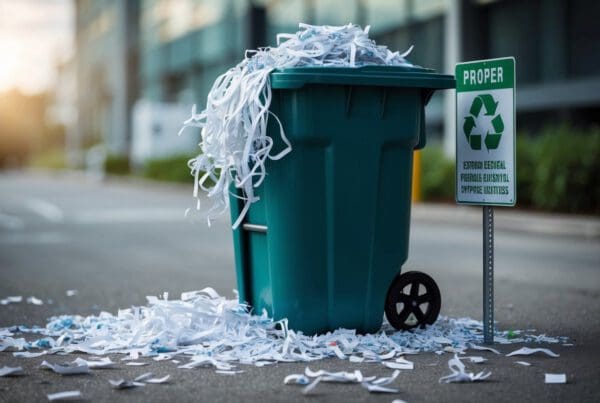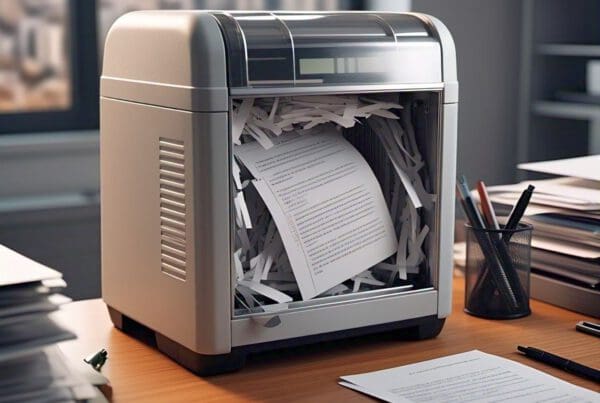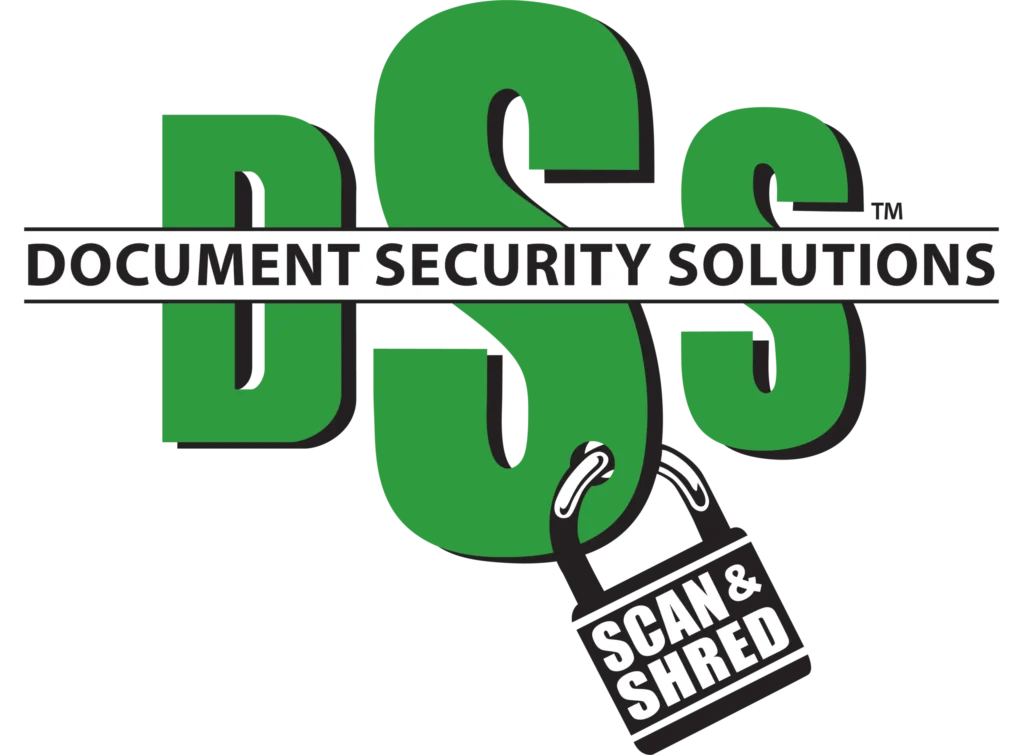Understanding In-House Shredding

In-house shredding involves using office shredders to destroy documents. We must weigh both the advantages and disadvantages of handling shredding ourselves. Compliance with privacy laws like HIPAA, FACTA, and GDPR is vital. Failure to comply can lead to serious consequences.
Pros and Cons of an Office Shredder
- An office shredder offers immediate control over document destruction.
- Pros include convenience and the ability to shred documents as soon as they are no longer needed. It helps us manage time and resources effectively.
- On the flip side, maintaining an office shredder can be costly.
- Cons involve expenses from frequent maintenance and repairs. Additionally, shredders may struggle with large volumes. These challenges can add up, leading to increased costs in the long run.
Document Destruction Compliance
When handling document destruction, compliance is essential. We must ensure that shredding meets specific standards to keep data secure. This means following regulations to prevent breaches and penalties.
Compliance involves using shredders that produce particles small enough to meet legal requirements. It also requires keeping records of shredded materials. Failure to comply can result in fines or legal action, highlighting the importance of thorough document destruction.
Privacy Laws: HIPAA, FACTA, and GDPR
Privacy laws like HIPAA, FACTA, and GDPR affect how we handle document shredding. These laws mandate how personal information should be discarded. HIPAA focuses on healthcare data, emphasizing patient confidentiality.
FACTA requires businesses to dispose of consumer information securely. It covers practices like credit reporting and ensures that information is destroyed beyond recovery. GDPR affects businesses handling EU citizens’ data and demands strict adherence to data protection rules. Ensuring compliance with these laws protects both individuals and businesses.
Cost Analysis of In-House Shredding

In-house document shredding involves several hidden costs. We need to understand labor expenses, invest in maintenance and equipment, and compare different types of shredders.
Labor Costs and Efficiency
Labor is a significant expense in in-house shredding. Employees spend time preparing documents, operating shredders, and managing waste. This time could be used for core tasks. Efficiency varies. If staff are not trained properly, shredding takes longer and costs more. We must consider whether our team can manage shredding effectively or if it’s better to hire dedicated personnel.
Maintenance and Equipment Investment
Maintaining shredders involves both costs and effort. Regular servicing is necessary. Parts need replacing when they wear out. Equipment itself is an investment. We usually choose between cheaper office-grade models or more expensive industrial ones. Each has its own costs and benefits. It’s vital to weigh the initial investment against ongoing maintenance needs.
Comparing Industrial and Office-Grade Shredders
Office-grade shredders often cost less upfront. They’re suitable for smaller volumes. Industrial-grade equipment is more expensive but handles large batches efficiently. Their speed and capacity can outweigh their higher price for larger organizations. Choosing the right type depends on our shredding needs. We must evaluate the frequency, volume, and sensitivity of documents being shredded to make the best decision.
Risks of In-House Shredding

Shredding documents in-house seems like a secure option, but it carries significant risks. These risks include possible data breaches and errors made by employees that can lead to the exposure of sensitive information.
Data Breach Risks and Security Breaches
In-house shredding can lead to data breaches if not managed properly. When we do everything ourselves, we might overlook critical security protocols. Important details can slip through the cracks, leading to potential breaches.
Confidential documents require strict security measures. If documents are not shredded accurately, pieces can be reconstructed. This allows unauthorized access to sensitive information. We have to consistently ensure that our shredding process meets high security standards to prevent accidental exposure.
Improper disposal of shredded material is another concern. Not all shredded paper is handled securely, leaving gaps in our security measures.
Potential for Human and Employee Error
Human error is a common risk in in-house shredding. Employees might forget to shred certain documents or mix shredded materials improperly. This has the chance to leave sensitive information unprotected, which can result in security problems.
The shredding process requires attention to detail. Mistakes, like failing to shred whole documents thoroughly, can jeopardize document security. Employee turnover and inconsistent training also contribute to these risks, as new team members may not fully grasp the procedures.
Routine checks and ongoing training are essential to minimize these errors and protect our sensitive data effectively.
Professional Shredding Services
Professional shredding services can help protect sensitive information. They ensure compliance with legal regulations and offer verification of the destruction process. These services can reduce risks associated with keeping shredding in-house.
Benefits of Secure Shredding Services
When we use secure shredding services, we gain several advantages. These services handle large volumes of documents efficiently, saving us time and effort. They have advanced equipment that shreds paper into tiny pieces, ensuring information can’t be recovered.
Moreover, professional shredding services meet strict compliance requirements. Many industries have specific rules about how documents should be destroyed. By using these services, we can be sure that we’re following all necessary regulations, minimizing risks of data breaches.
Another key benefit is the ease of scheduling. We can set up recurring pickups or call them when needed. This flexibility ensures that confidential information isn’t left sitting around, waiting to be shredded.
Obtaining a Certificate of Destruction
A Certificate of Destruction is crucial for documenting the shredding process. It provides proof that documents were securely destroyed. This is important for audits and legal purposes, offering peace of mind that compliance requirements are met.
The certificate includes details like the date and method of destruction. It also often lists a unique serial number for tracking. This documentation is important, as it demonstrates our commitment to protecting sensitive information.
By using professional shredding services, we not only secure our confidential data but also have a reliable record. This ensures our organization remains accountable and transparent in its document management practices.





